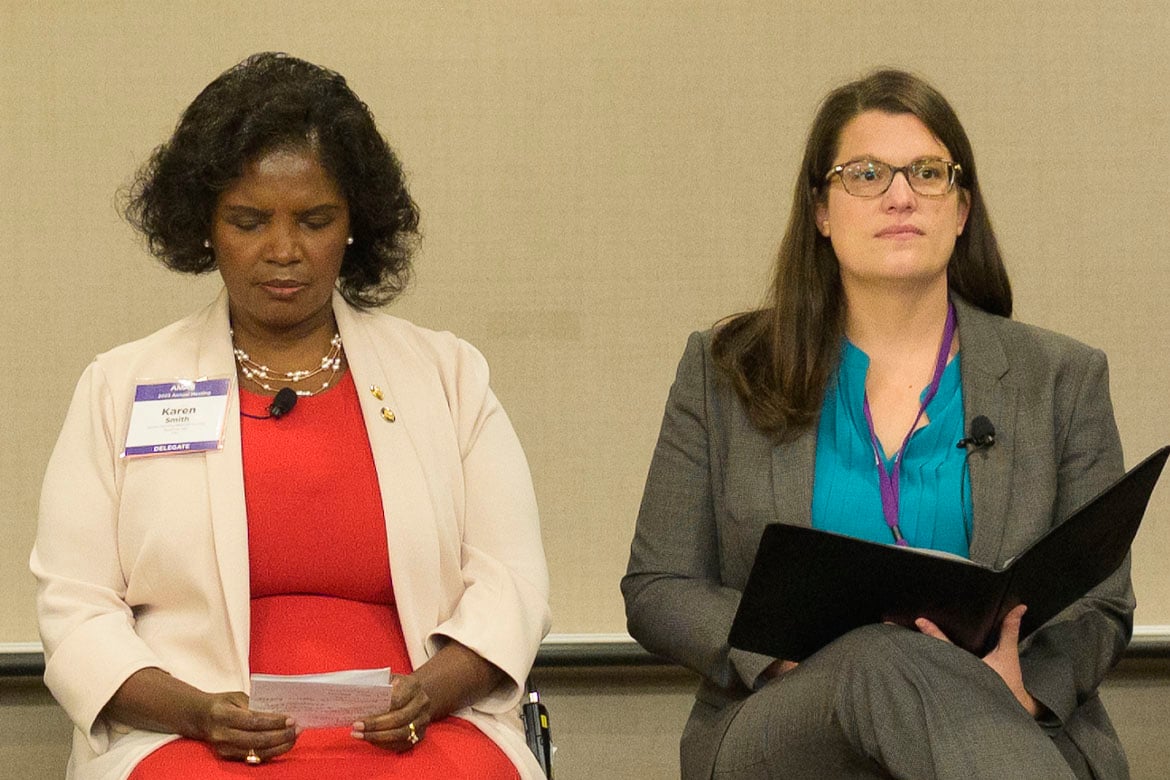The staggering diabetes statistics in the U.S. highlight the urgent need for effective prevention strategies. With 28.5 million U.S. adults diagnosed with type 2 diabetes and nearly 100 million with prediabetes, the nation faces a significant health challenge.
But the National Diabetes Prevention Program (National DPP) lifestyle-change program is an approach that continues to yield positive results, underscoring the importance of proactive engagement from physicians and other health professionals, as well as the wider community.
The AMA’s Diabetes Prevention Guide supports physicians, care teams and health care organizations in defining and implementing evidence-based diabetes prevention strategies. This comprehensive and customized approach helps clinical practices and health care organizations identify patients with prediabetes and manage their risk of developing type 2 diabetes, including referring patients at risk to a National DPP lifestyle-change program based on their individual needs.
During a recent education session, experts shared some great tips for improving patient referral to a DPP lifestyle-change program.
Use physician champions
As part of DiabetesFreeNC—the statewide initiative to prevent diabetes in North Carolina—the North Carolina Medical Society, together with the AMA, identified six physician champions throughout the state from different practice settings and geographies. Each champion was provided with training as well as tools and resources to spread awareness of the National DPP lifestyle change program among physicians and teams.
Champions are essential because “we have the key essence—the patient-physician relationship. So, understanding what our relationship is with our patients, how do we interact, how do we connect,” said Karen L. Smith, MD, a family physician in private practice in rural Raeford, North Carolina, and delegate for the North Carolina Medical Society. “But then recognizing that our colleagues too have those same types of relationships and how can we leverage that. That’s the essence of what we do every day.”
“Also, in our practices, what is our workflow? What are some of those challenges and barriers and success stories that we could share with each other, give each other tips in terms of how you get a project like the DPP into the practice?” said Dr. Smith during the session, held at the 2023 AMA Annual Meeting in Chicago.
“By having those stories and sharing those experiences and making sure that we kept our patients in the forefront of why we were doing this because it’s neat to hear that all this activity was occurring in Raleigh, that it was occurring behind the scenes to set it up, but we had to get it into the ground. We had to actually make it happen.”
Streamline the referral process
Physicians “may not know much about the DPP. The siloed nature of the DPP is one big challenge” that needs to be addressed, said Padmini Ranasinghe, MD, MPH, an assistant professor of medicine at Johns Hopkins University School of Medicine and alternate delegate for the Maryland State Medical Society. She is also a member of the AMA Council on Science and Public Health.
For example, Johns Hopkins has “a nurse navigator system. And what nurse navigators would do is … they may come to our multidisciplinary rounds and remind physicians about the program,” Dr. Ranasinghe said. “They have access to Epic and they may screen patients, put the order in. We just need to sign it. It’s one way to get it off from our plate. That’s one way of streamlining the process.”
Embrace the EHR
“One thing physicians do not want is extra administrative work. So, really getting referrals built into the EHR was absolutely key,” said Karen Scherr, MD, PhD, a family physician at Duke University Health System. For referrals, “it’s entered just like any other order—like a podiatry referral.”
“We had 93% of clinicians refer at least one patient in our pilot site and 84% felt that it improved the care they could offer to patients with prediabetes,” Dr. Scherr said, noting that “16% of eligible patients were referred to the diabetes prevention program, which was an increase from less than 1% prior to the initiation of our program.”
After the pilot in one site, it was rolled out across all of Duke Health “and to date, over 900 patients have been referred by more than 100 providers with about 450 patients enrolled in a DPP through the Triangle YMCA,” she said, noting this “has allowed then the Triangle YMCA to have consistent classes, which means we can refer more and it’s just a virtuous kind of cycle and loop.”
Emphasize shared savings
“If we can prevent diseases like diabetes, that is going to allow us to better control other conditions like hypertension … and hopefully improve the patient’s overall outcome. It’s called shared savings,” Dr. Smith said.
This can be shown through checking how many patients are eligible for the DPP, said Dr. Smith. “Beyond that, it’s a quality of care that we’re providing when word is out in the community that this practice over there prevents diabetes.”




